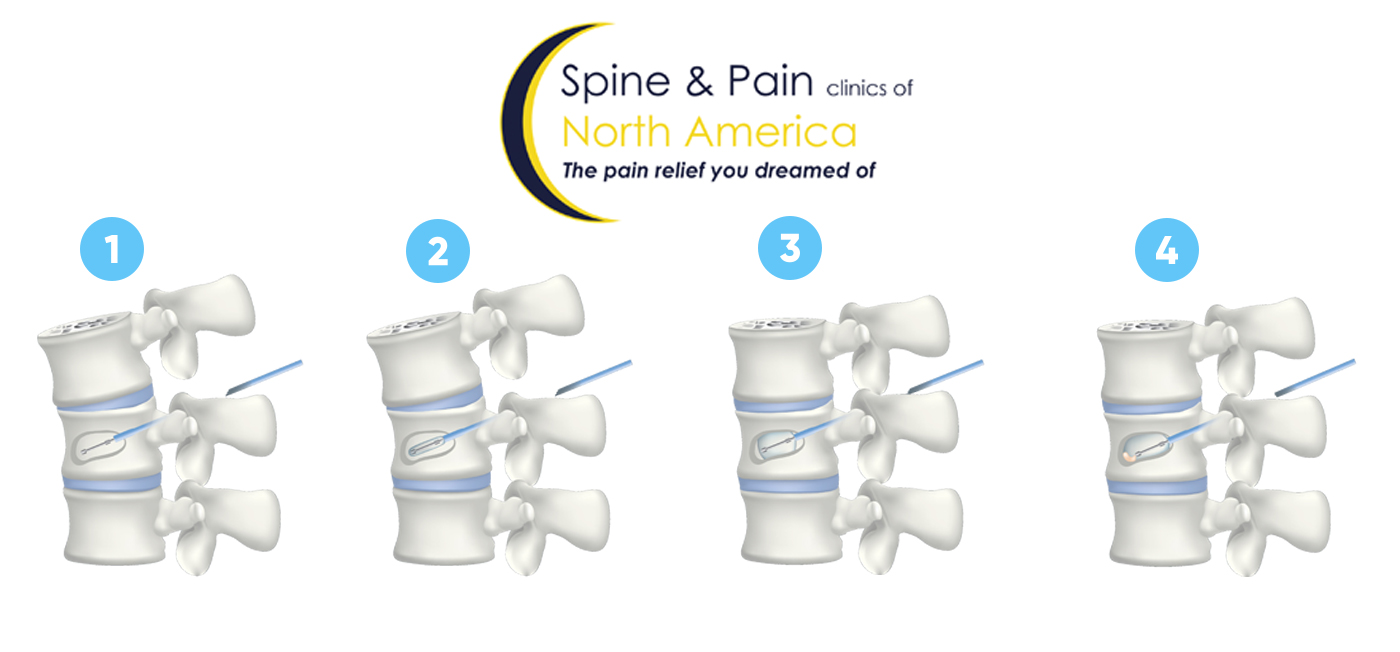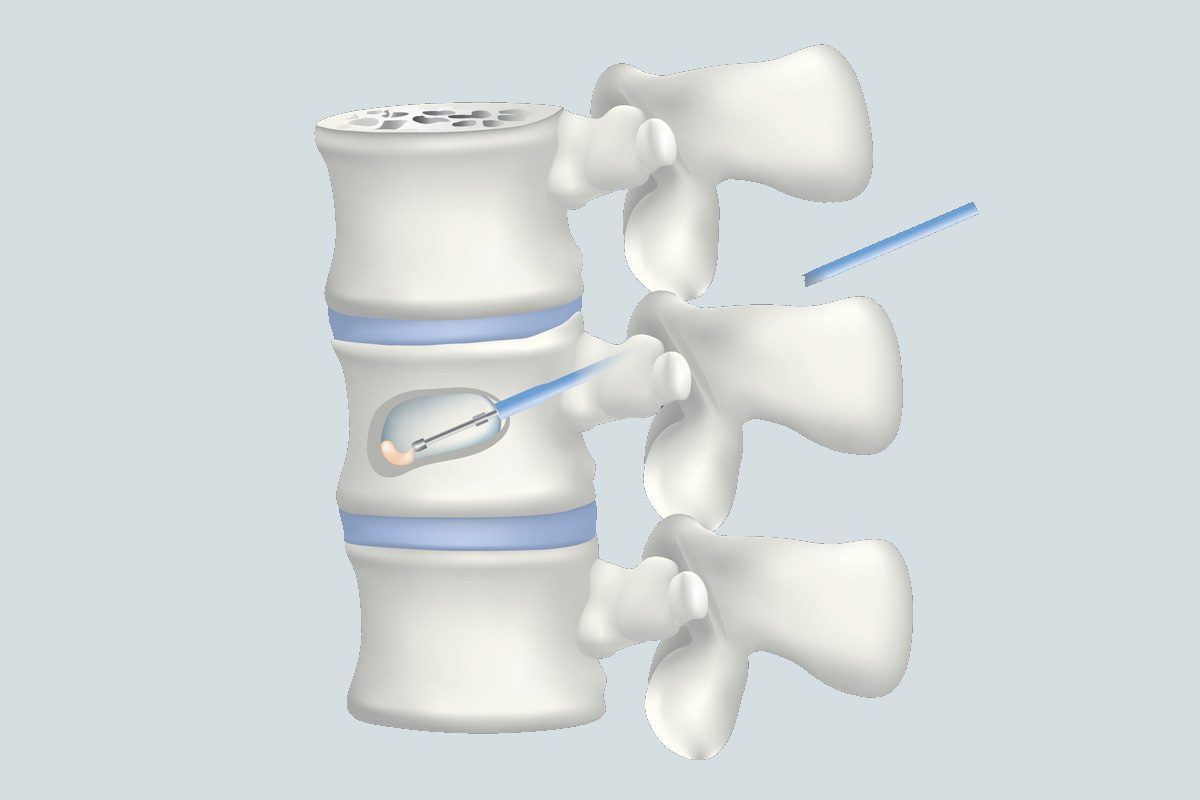Kyphoplasty
![]()
Call (703) 520-1031 or use the form to send us your contacts.
Kyphoplasty as well as vertebroplasty are mini-invasive procedures that are performed for painful progressive vertebral compression fractures (VCF). VCFs happens when the bones of the spine become compressed and break.
What Is Kyphoplasty?
Kyphoplasty often involves the attempt to directly reduce the kyphosis that results from vertebral body collapse. In kyphoplasty, the special ballon is placed into the broken vertebra and used to reduce the vertebral body collapse towards its original shape. The central void created after removal of the balloon is filled with stabilizing material, leaving the material in place to stabilize the fracture in the improved vertebral shape.

What Are the Benefits of Kyphoplasty?
Kyphoplasty has many benefits. Two of them are the procedure is minimally invasive and normally takes no more than an hour. Additional benefits include the following.
- Significant relief from back pain
- Restores bone height in the spine so body height is also restored
- Improves the quality of life due to pain relief and less need to use prescription or over-the-counter pain medication
- Restores ability to perform many daily activities
- Restores posture
- Improves physical mobility
- Shorter recovery time compared to more invasive procedures
- No rehabilitation or physical therapy is required
How Should I Prepare for Kyphoplasty?
Before the surgery, the doctor will do a physical exam and order an imaging procedure, like a CT scan, spine x-ray or MRI. The physician will provide instructions on preparing for the day of surgery. There is no standard protocol, but typical instructions may include the following.
- On the day of the surgery, take a shower or bath
- Stop taking specific medications, especially blood thinners like coumadin and aspirin
- Do not drink or eat anything up to three hours before the surgery
- Wear loose, comfortable clothing
- Do not wear jewelry
- Stop smoking because smoking can increase bleeding
- Do not drink alcohol the several days leading up to the surgery
The patient needs to tell the doctor about all prescribed and over-the-counter medications and herbal or natural health products being taken. The doctor will decide which medications and natural health products to stop and which to take on the day of the procedure.
How Does Kyphoplasty Work?
Kyphoplasty is performed under live fluoroscopic guidance to ensure the accuracy and safety of this procedure. The procedure is performed in our pain clinics.
- You will be asked to lay on your stomach, and your back will be cleaned with an antiseptic. The procedure is performed under mild sedation.
- Dr. Majid Ghauri will guide a needle toward the affected vertebral level under x-ray guidance. The injection needle will be seated into a portion of the bone called the vertebral body.
- During kyphoplasty, a small balloon will be inflated to help restore the vertebral body height and provide a cavity for the cement that will be injected.
- During vertebroplasty, a balloon will not be used, but cement will be injected into the fracture.
What Happens After Kyphoplasty?
After the procedure is completed, the patient will spend a few hours under observation to ensure there are no after-effects from the sedative or anesthesia. In some cases, the patient may need to stay overnight.
It is best if someone drives the patient home. Most people can walk within a few hours after the kyphoplasty, but any medical procedure is stressful. Also, the area where the needle was inserted will be mildly sore. Once home, keep the injection site clean. Applying ice may reduce the soreness and reduce inflammation. The soreness typically goes away within 2-3 days.
The American Academy of Orthopaedic Surgeons (AAOS) encourages patients to resume their normal activities as soon as possible. However, each case is unique, so there is no set timeframe. The surgeon may recommend staying in bed for the first 24 hours before resuming normal activities with one caution. The patient may be advised to avoid strenuous activities, lifting heavy items, and pulling and pushing movements for at least four to six weeks.
What is the Recovery Time After Kyphoplasty?
The full recovery time for a kyphoplasty is four to six weeks. The actual time depends on factors like the number of vertebrae treated and general health. There are seldom any complications from the surgery that slow down recovery.
FAQs
How long does pain last after kyphoplasty?
The pain associated with kyphoplasty due to the needle inserted in the back is short-lived. Soreness is usually gone within a few days.
Who is not a candidate for kyphoplasty?
Kyphoplasty is only suitable for people experiencing back pain due to a compression fracture and who have not improved with conservative treatments. If the back pain is related to a different condition, like disk herniation or stenosis, the patient is not a candidate for kyphoplasty. Other reasons a person may not be a candidate for kyphoplasty include age, bleeding disorders, spinal deformities and when more than 80 to 90% of the vertebral body has collapsed.
Is kyphoplasty a major surgery?
Kyphoplasty is a minimally invasive procedure and is not considered major surgery. It takes approximately 45 minutes after you are administered a local anesthetic. Some people also get a mild sedative. Only a small puncture is made through the skin, and no incision is required. After an hour or so, you should be able to walk.
How long does kyphoplasty last?
Studies of patients undergoing kyphoplasty have found that pain is reduced and mobility improved for at least three years.
